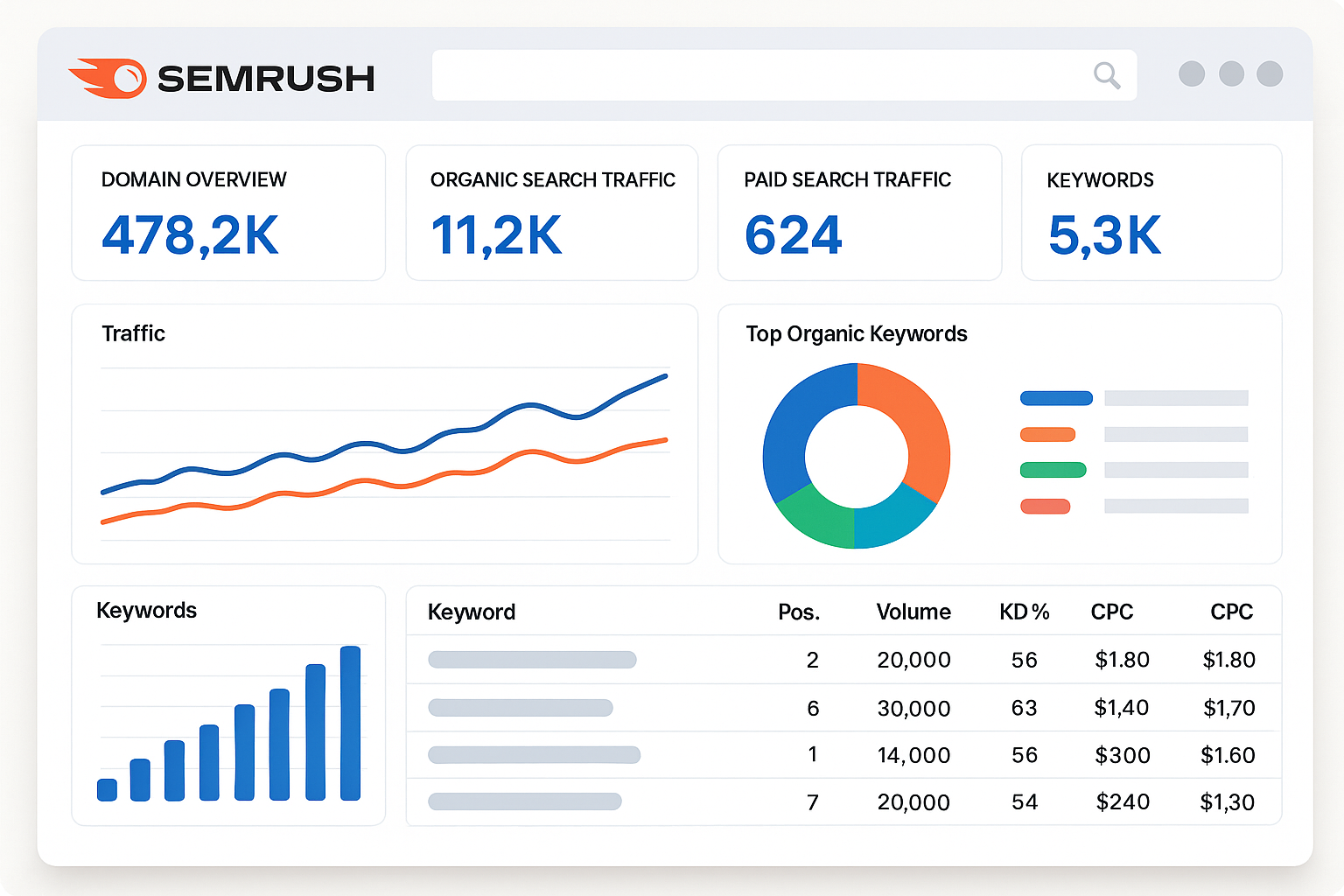If you want your blog to rank on Google and attract consistent traffic, keyword research is the foundation you can’t skip. Whether you’re writing your first post or building a long-term content strategy, choosing the right keywords can make or break your success.
In this guide, we’ll walk you through a step-by-step process to do keyword research the right way—even if you’re a complete beginner.
Table of Contents
Toggle
What is Keyword Research?
Keyword Research is the process of finding and analyzing the words and phrases people type into search engines. These keywords help you understand what your audience is searching for so you can create content that meets their needs and shows up on Google.
In simple terms, it’s how you figure out what topics to write about on your blog.
Why is Keyword Research Important for Bloggers?
If you skip keyword research, you’re guessing what people might be interested in. But with the right keywords, you:
- Drive organic traffic to your blog
- Rank higher on search engines like Google
- Target the right audience
- Discover low-competition opportunities for growth
No matter how great your blog post is, without keyword research, it might never be seen.
Step-by-Step Keyword Research Process for Bloggers
Step 1: Understand Your Niche and Audience
Before you start looking for keywords, get clear on:
- What your blog is about
- Who you’re writing for
- What problems your audience is trying to solve

Step 2: Brainstorm Seed Keywords
Seed keywords are the basic terms related to your topic. Start with broad ideas and think like your audience.
For a fitness blog, seed keywords might be:
- “home workouts”
- “weight loss tips”
- “muscle building diet”
Write down all potential topics—even simple ones.
Step 3: Use Keyword Research Tools
Now it’s time to turn those seed keywords into powerful blog topic ideas. Here are some free and paid tools to help:
- Google Keyword Planner (Free)
- Ubersuggest (Free & Paid)
- Ahrefs (Paid)
- SEMrush (Paid)
- Answer the Public (Free limited)
- Google Search Autocomplete (Free)
- AlsoAsked (Free)
These tools show:
- Monthly search volume
- Keyword difficulty
- Related keywords
- Questions people ask

Step 4: Analyze Keyword Metrics
When selecting keywords, consider the following:
- Search Volume – How many people are searching for it?
- Keyword Difficulty – How competitive is the keyword?
- Search Intent – What does the user want to find?
Choose keywords with:
- Moderate to high search volume
- Low to medium competition
- Clear and relevant intent
Step 5: Check What’s Already Ranking
Go to Google and search your target keyword. Analyze the top 5-10 results:
- What type of content is ranking?
- Are they blog posts, videos, or product pages?
- Can you write something better or more detailed?
This gives you insight into what Google considers useful for that keyword.
Step 6: Group and Organize Keywords by Topics
Group related keywords together so you can create pillar content and supporting blog posts.
Example:
- Pillar Topic: “Email Marketing for Beginners”
- Supporting Keywords:
- “best email marketing tools”
- “how to write email subject lines”
- “email marketing strategies”
This builds topical authority and improves your SEO structure.
Step 7: Use Keywords Naturally in Your Content
Once you finalize your keywords, use them strategically in:
- Blog title
- URL
- Meta description
- Headings (H1, H2)
- First 100 words
- Image alt text
- Throughout the content (without stuffing)
Keyword research doesn’t have to be overwhelming. With the right approach and tools, you can find the exact keywords your audience is searching for—and use them to create valuable content that ranks.
Remember, SEO is a long game. Keep researching, experimenting, and publishing, and over time, you’ll see the results.